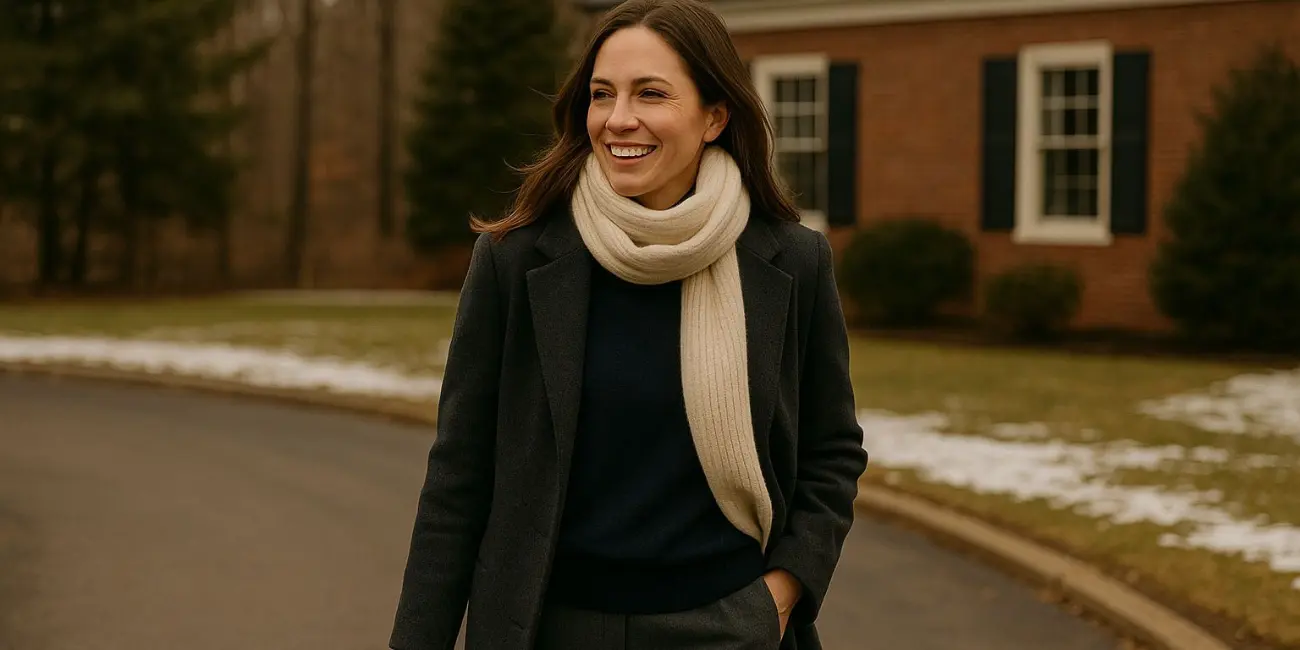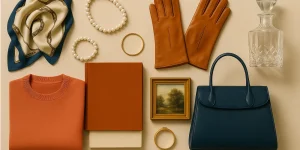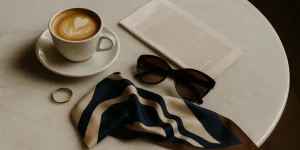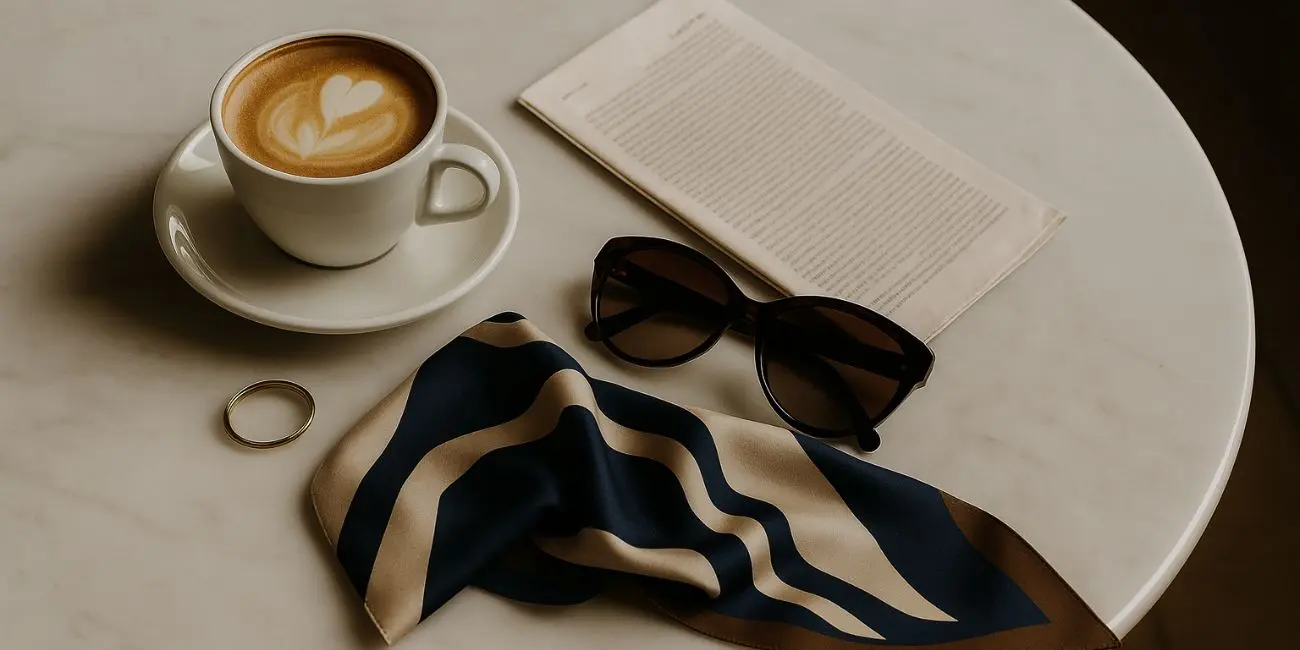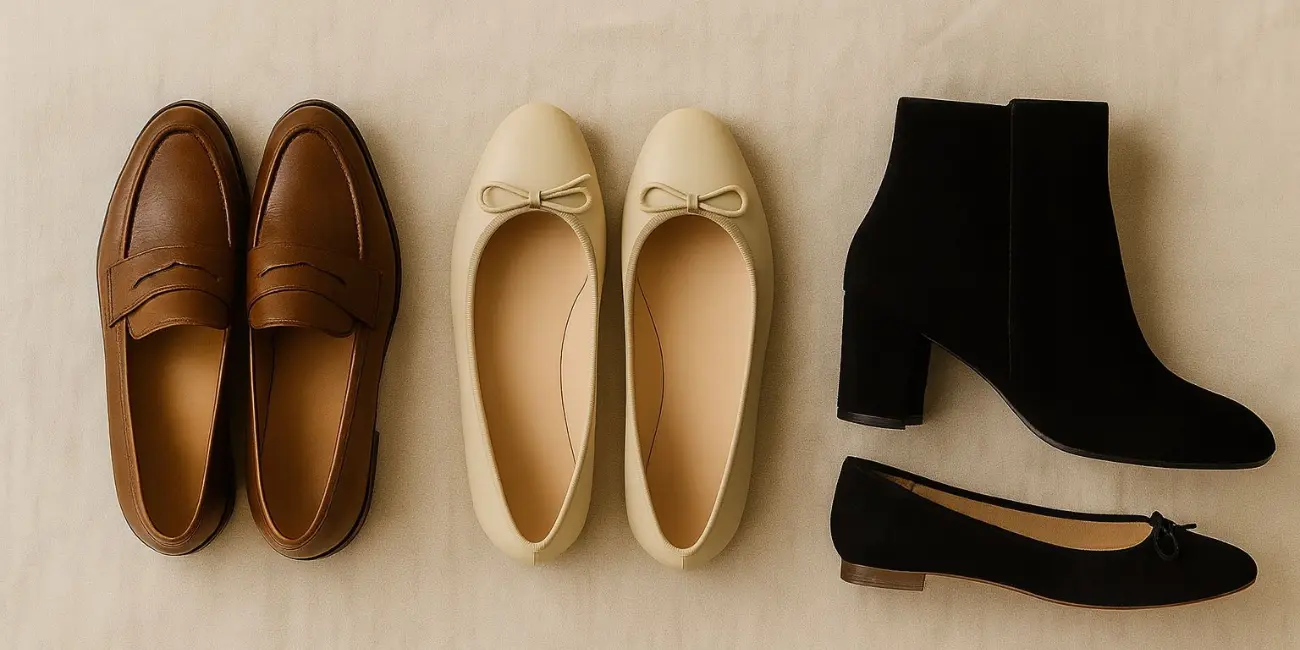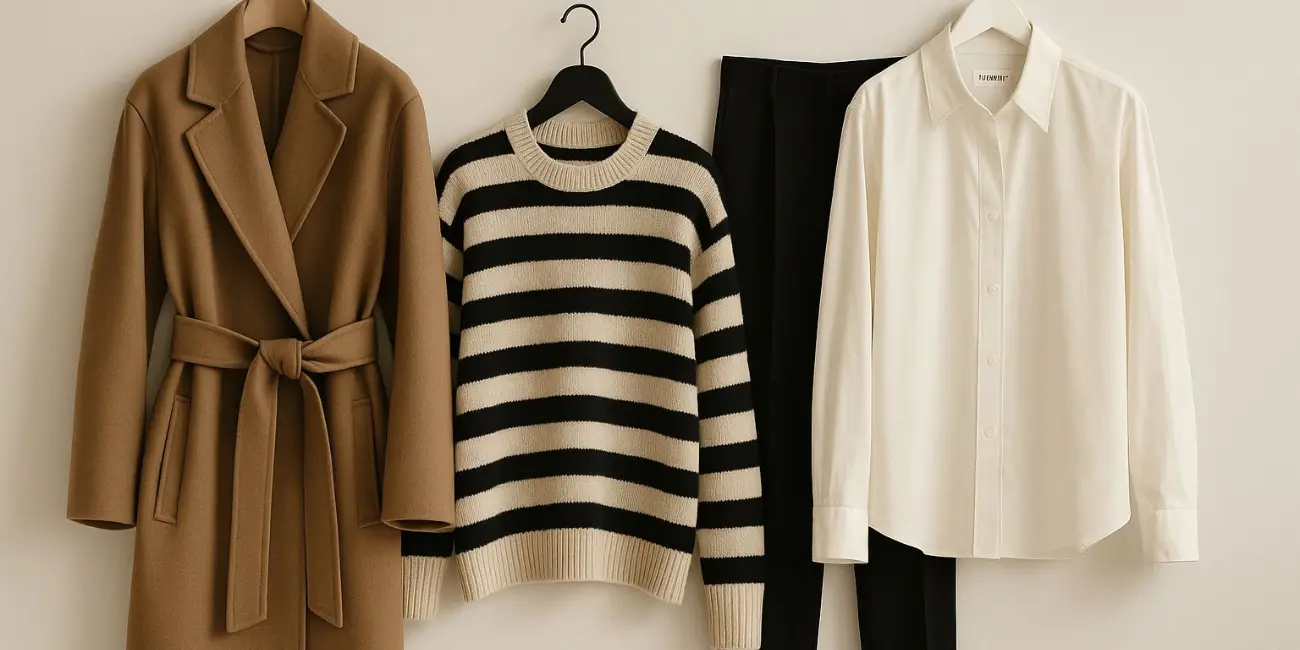Walking into a country club one winter afternoon, I realized I’d completely missed the dress code. My blazer was flimsy, my coat was loud, and all around me were people in quiet, layered neutrals that suddenly made my outfit feel out of place.
It hit me then: the point isn’t to show off, it’s to blend into a place built on tradition. Winter only complicates it, because the clothes have to keep you warm without losing that sense of polish.
The good news is, once you know the formula, dressing for a country club in winter doesn’t feel intimidating.
It comes down to pieces that have stood the test of time: a wool coat that feels heavy in your hands, a cashmere sweater you can throw on without thinking, shoes that still look polished even after years of wear.
Trends rarely matter here. The aesthetic is closer to what you’d find in an old family album than on Instagram.
So, what exactly makes up the perfect country club outfit winter edition? Let’s go through it, piece by piece.
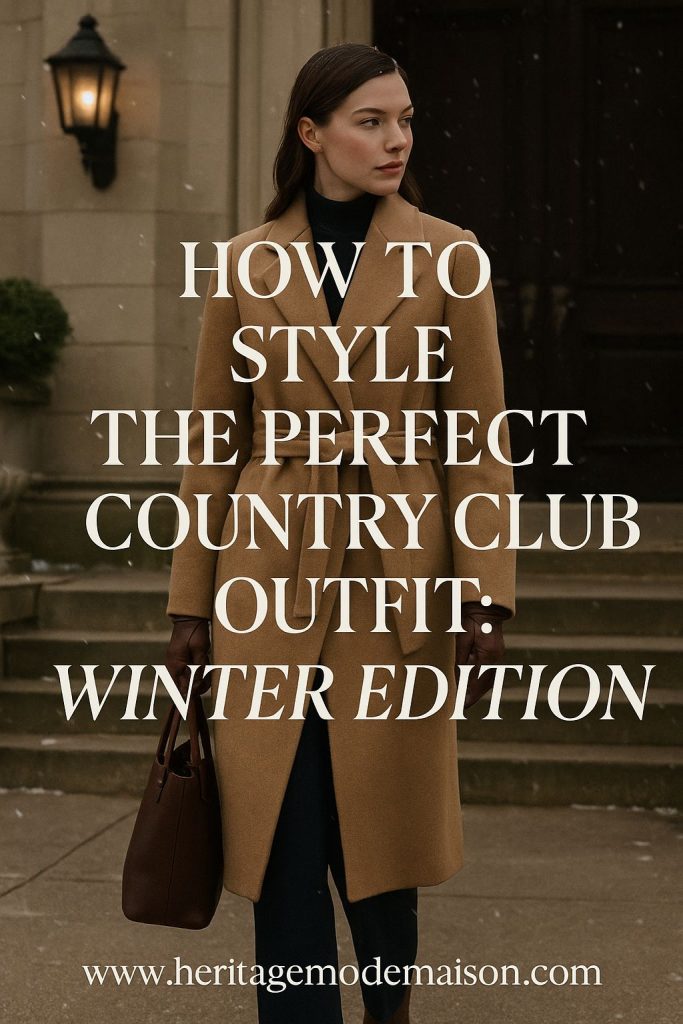
Why winter country club style feels different
Country club style always leans classic, but winter brings its own rhythm. You can’t stroll in with a breezy polo dress or linen skirt, you need layers that keep you warm but still look sharp. This is when the fabrics do a lot of the heavy lifting.
The fabrics don’t really change at all, usually, it’s wool, cashmere, tweed, silk. The shapes stay classic too. Nothing cropped or oversized, nothing that looks like it should be on the slopes.
Clubs, after all, value continuity. The way members dressed thirty years ago isn’t that far off from how they dress now.
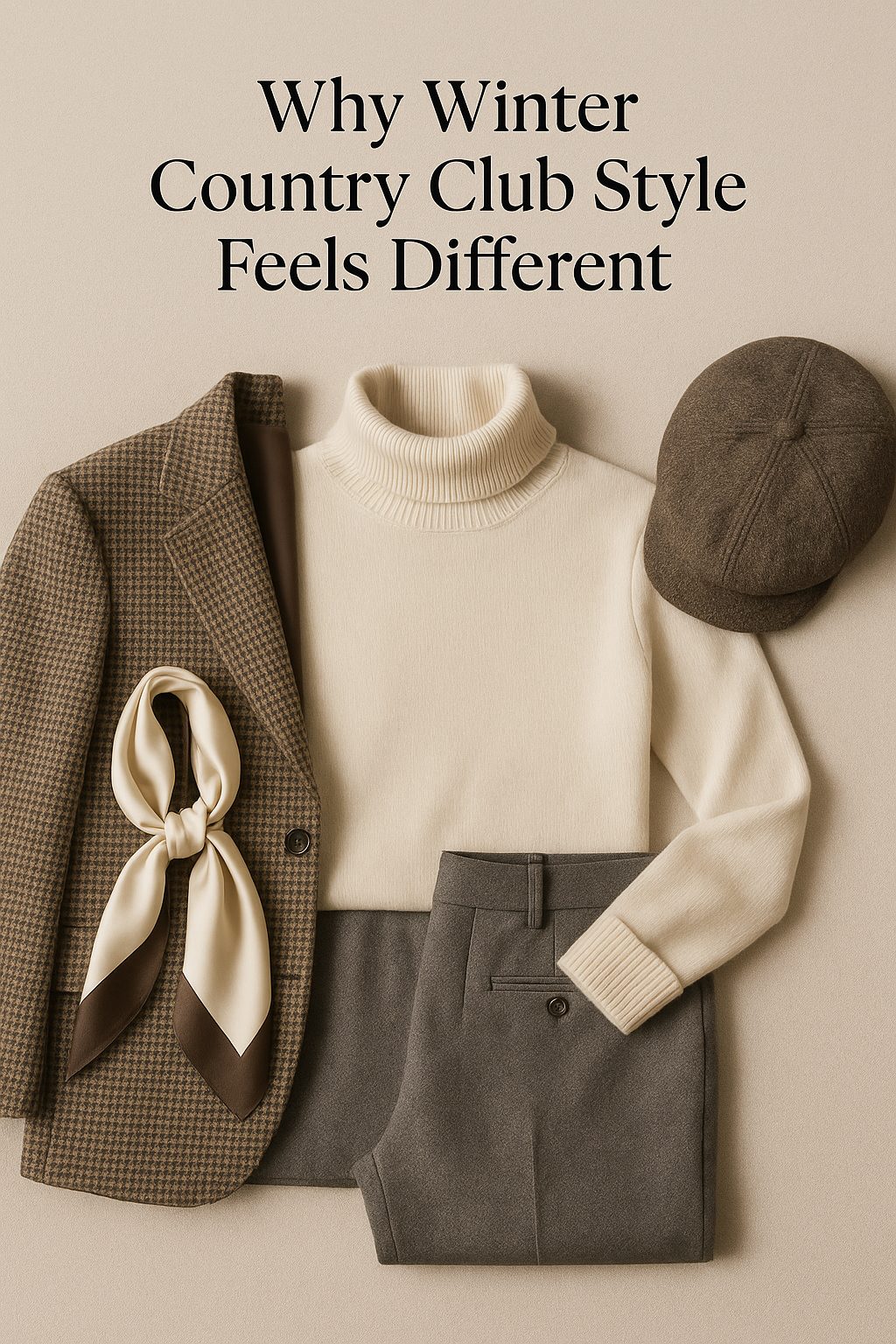
The coat: your first impression
The coat is always the first thing people notice. You’ll be in it when you arrive, greeting friends in the foyer, maybe slipping it over your shoulders at dinner if there’s a draft.
The best options:
- Wool wrap coat in camel, belted at the waist, long enough to cover the hem of a skirt.
- Navy peacoat with brass buttons, slightly cropped but structured.
- Charcoal cashmere overcoat that feels heavy and hangs cleanly.
I once wore a quilted puffer to a country club dinner and knew right away it didn’t fit. Surrounded by wool coats, mine looked far too casual. A good wool coat not only fits the setting but also holds up year after year.
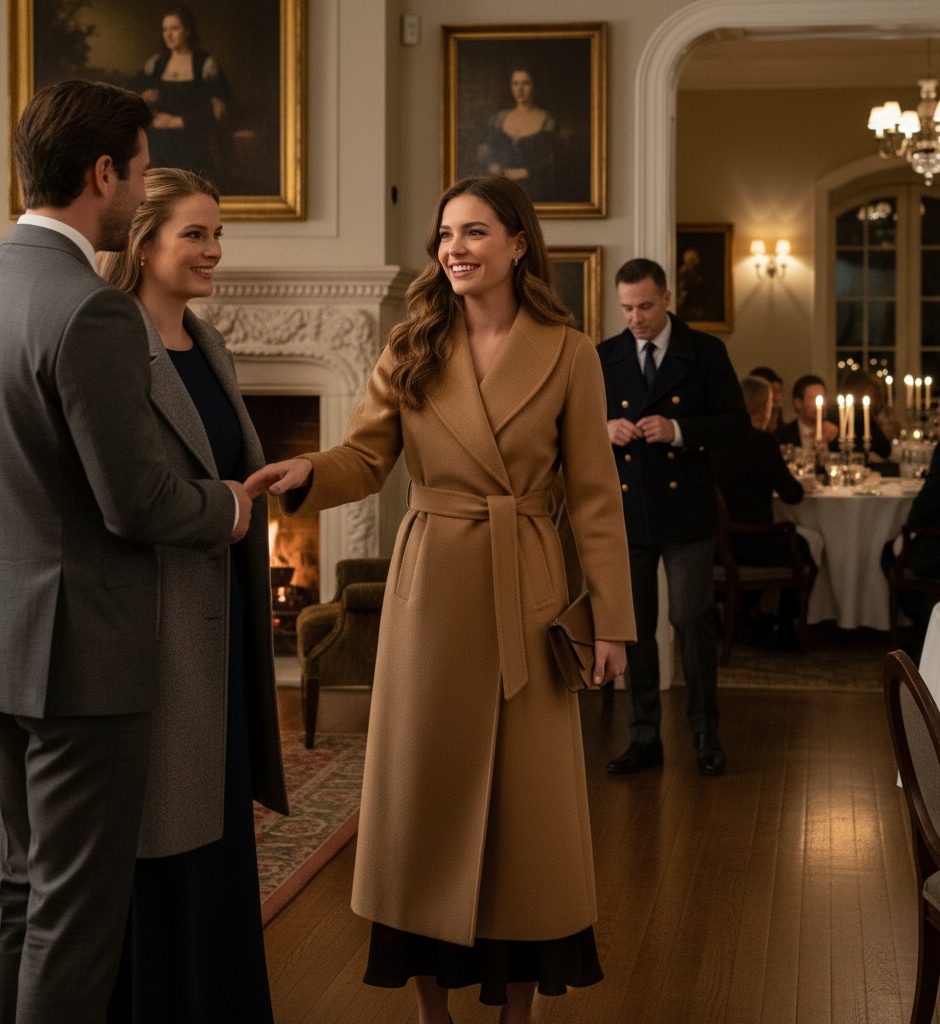
If you’re building your wardrobe, our old money winter jackets guide is a good place to start.
Knitwear: the heart of winter dressing
Inside the club, coats come off and knitwear takes center stage. A good sweater looks elegant enough on its own, but layers easily when needed.
Favorites to keep on rotation:
- A cashmere crewneck in navy, cream, or soft grey. I’ll tuck it into trousers sometimes, other days just throw it over a collared shirt.
- A thin turtleneck in black or camel. It layers under a blazer without adding bulk.
- Cable-knit cardigan with understated buttons. Cozy but still refined.
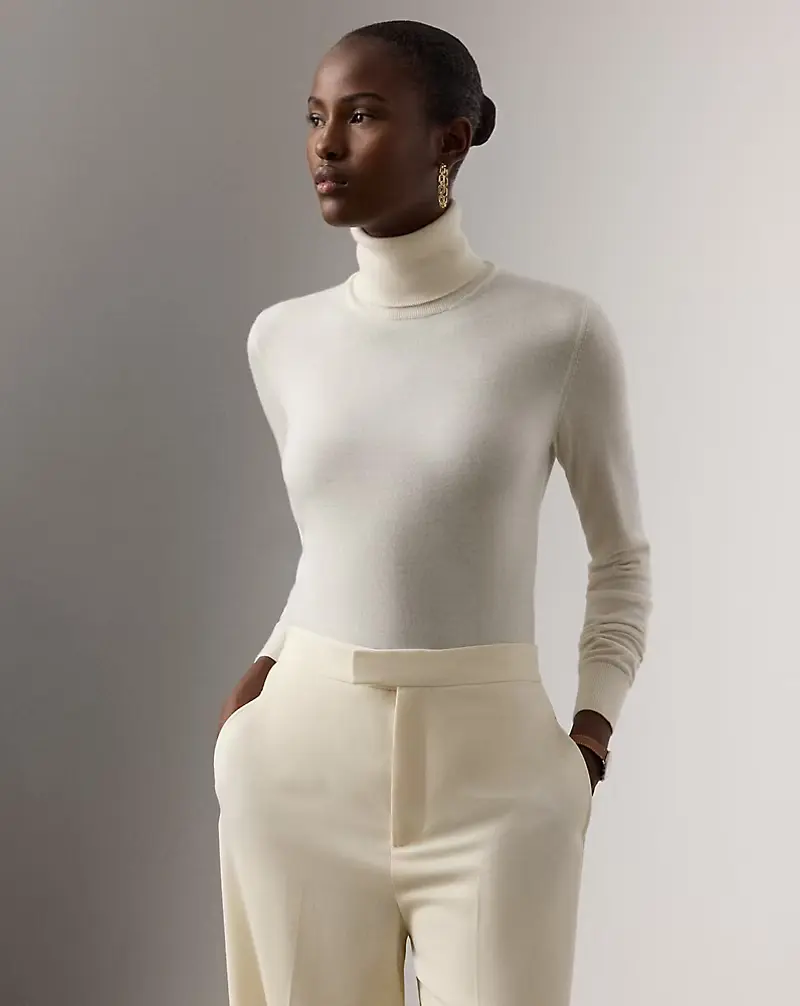
My go-to has always been a navy crewneck. I’ve worn it to a brunch by the fireplace, to a committee meeting in a wood-paneled room, even once layered over a tennis polo when the match ran long. It never feels out of place. That’s the power of simple knits in a country club casual setting.
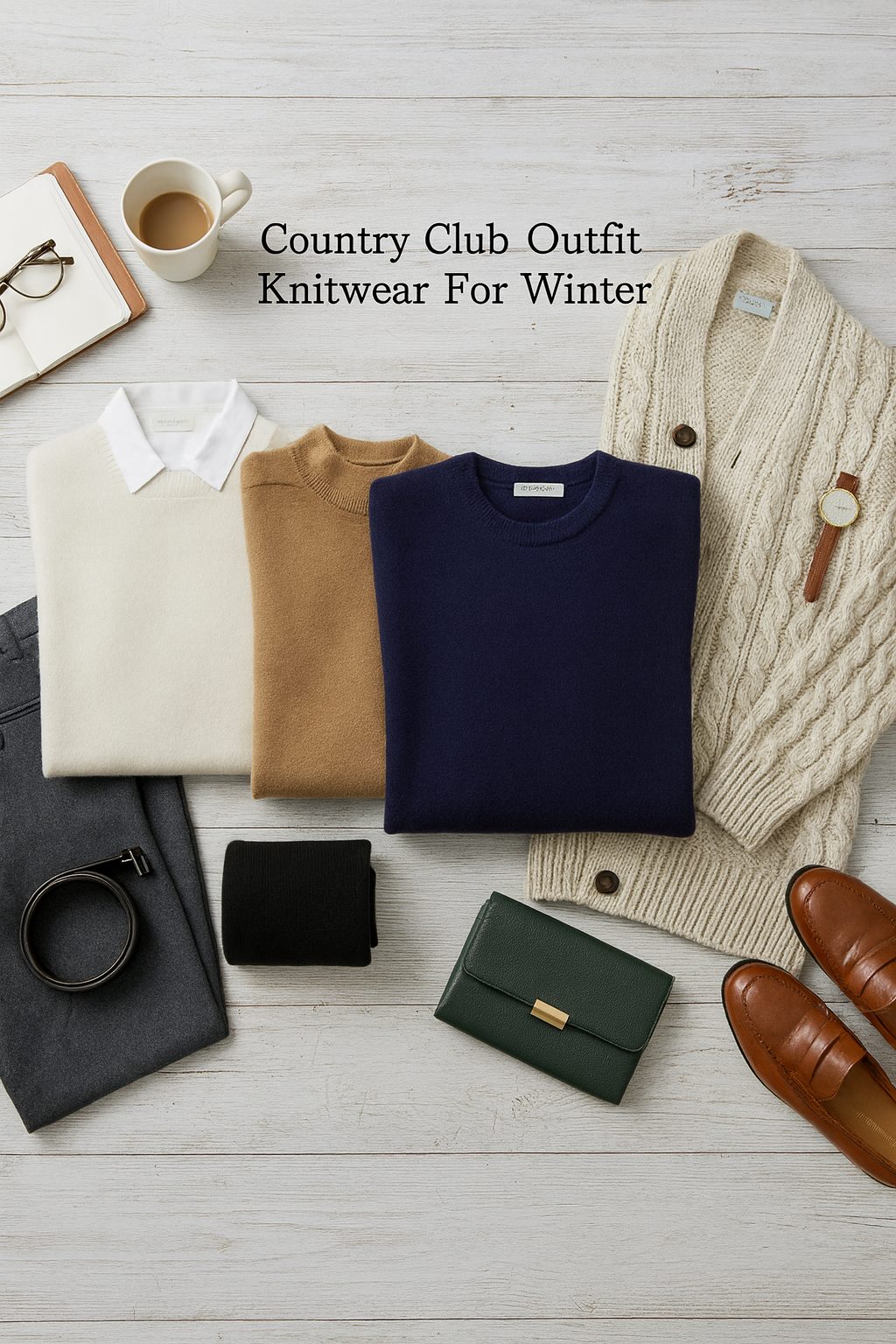
Trousers, skirts, and dresses
For the bottom half, stick with pieces that hold their shape but don’t feel stiff.
Trousers: I usually reach for straight or wide-leg wool in taupe, grey, or navy. Black can look a bit heavy in winter. If I add a belt, it’s always something slim and simple.
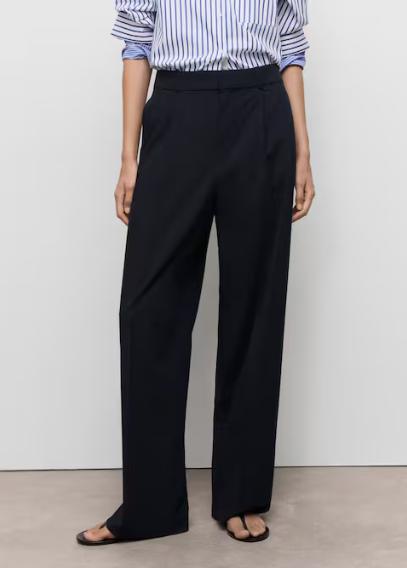
Skirts: A knee-length wool skirt works quietly in winter. Pleats add movement, but even a plain A-line looks polished. Always wear with opaque tights, bare legs feel out of season.
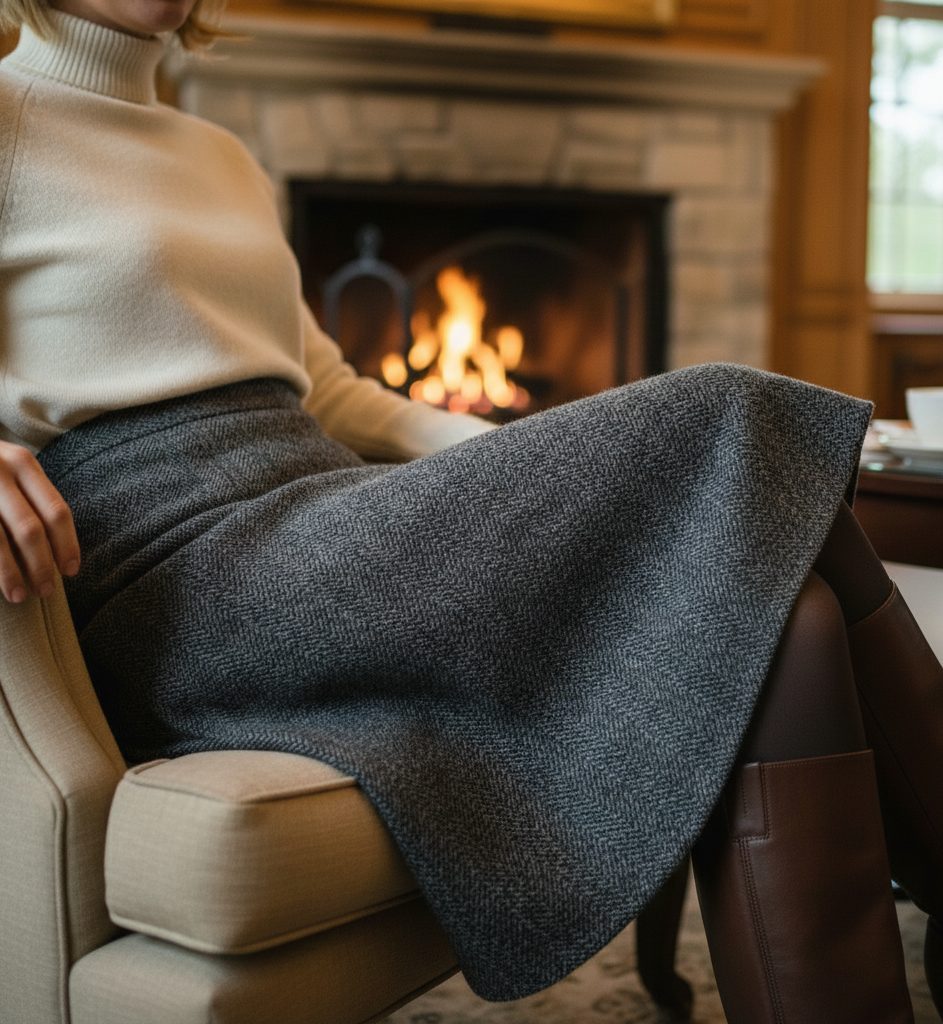
Dresses: A long-sleeve knit dress is ideal. Mine is in charcoal and pairs with riding boots and a slim belt. A blazer layered over top instantly makes it dinner-ready.
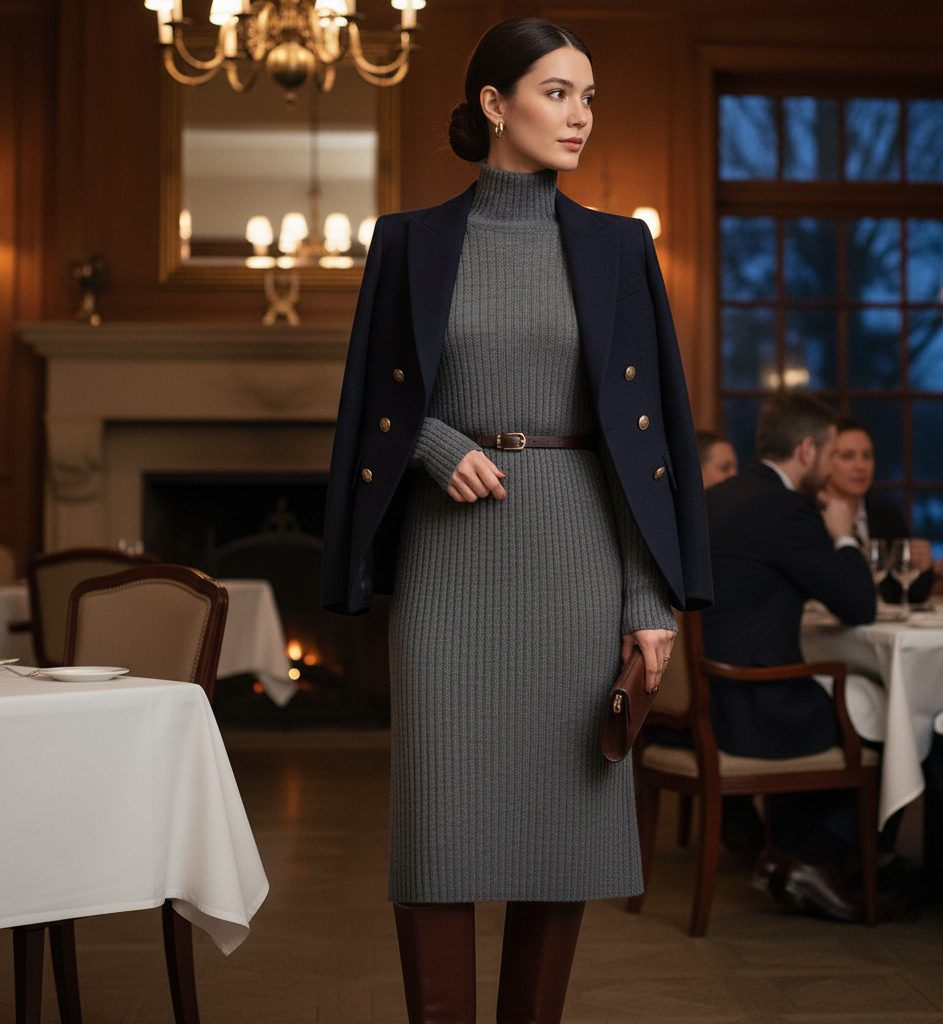
I used to assume dresses were only for spring or summer at the club, but a heavy knit dress changed my mind. It feels warm, modest, and somehow easier than putting together separates.
Shoes that walk the line
Winter footwear at the club has to balance function with polish. Slushy parking lots exist, but you can’t walk in wearing hiking boots.
Here’s what works:
Loafers: Leather or suede, always polished.
Ankle boots: Sleek leather with a low heel. Anything chunky looks wrong indoors.
Riding boots: Ideal for colder regions. Pair with a skirt or tuck trousers in neatly.
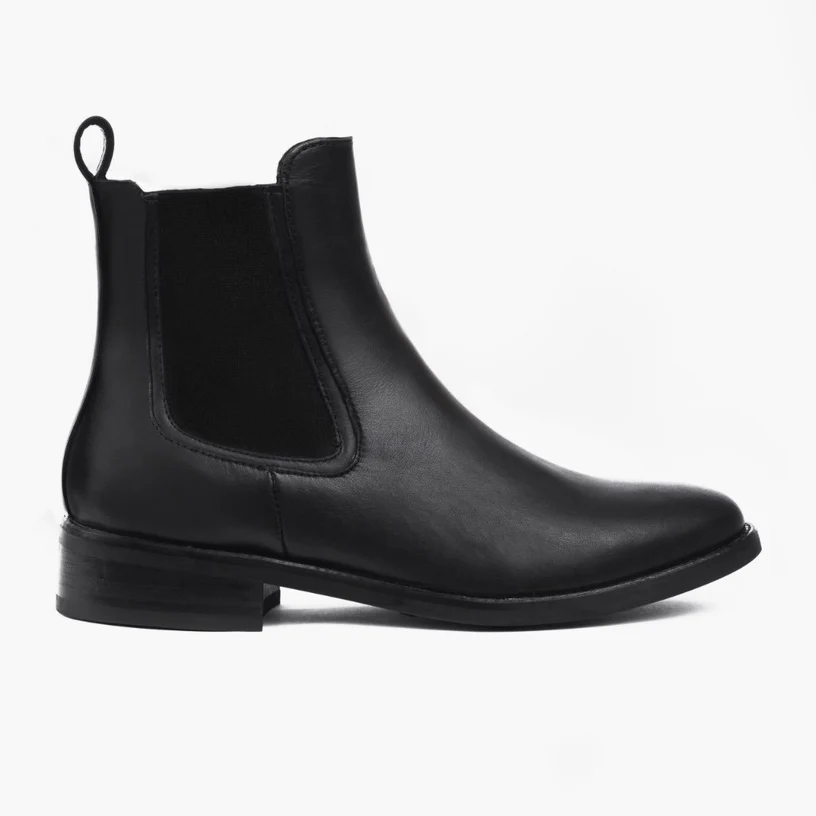
I’ve had a pair of camel suede boots for years. They’ve been resoled a couple of times, but somehow they still feel just right every winter.
For more inspiration, our old money shoes article covers the best classic options.
Country club casual in winter
Not every outing requires formality. Sometimes it’s a quick lunch after squash or a casual family dinner by the fire. This is where country club casual comes in.
An easy formula:
- Dark denim (no rips, no fading) or tailored chinos
- A collared shirt layered with a cashmere sweater
- Loafers or clean leather sneakers
One winter afternoon, I wore straight dark jeans with a cream turtleneck and a navy blazer. It felt just right. Casual but still respectful of the setting. That’s the line to walk.
Accessories that make a difference
Accessories are subtle but important. It shouldn’t take over the outfit, they’re there to finish it quietly.
Scarves: a little silk one works with a blazer, and a big cashmere wrap is the only thing that keeps me warm outside.
Jewelry: most days, I just put on pearl studs, maybe a thin bracelet… and leave it at that. A watch if you wear one.
Bags: a leather tote for daytime, then something smaller at night. Black, brown, burgundy — simple shades always last.
If you’re building your collection, our old money accessories guide has a breakdown of timeless pieces that last decades.
The winter palette
The colors you choose matter as much as the cut. Country club style thrives in understatement, especially in the colder months.
The best shades:
- Navy
- Camel
- Grey
- Ivory
- Burgundy (as an accent)
- Forest green (sparingly)
I like to add one small pop, like a burgundy loafer or green scarf, against a base of neutrals. It adds depth without pulling focus. For a deeper dive, see our old money color palette breakdown.
Tailoring: the unspoken rule
Even casual outfits need sharp tailoring. A sweater can be soft, but your trousers should skim just right at the hem. Blazers should hug the shoulders without pulling. Sleeves should show a sliver of cuff but never swamp your hands.
Good tailoring makes an off-the-rack piece look custom. That quiet precision is what sets apart old money style from something bought just for the season.
What to avoid
It helps to know the don’ts as much as the dos.
- Loud logos or monograms
- Overly trendy silhouettes (cut-outs, oversized sneakers)
- Bright neon colors
- Distressed denim
- Puffy coats indoors
These stand out in the wrong way. Country clubs are built on tradition, and your wardrobe should echo that.
Final thoughts
Styling the perfect country club outfit in winter isn’t about impressing people. It’s more of a feeling of ease in a place that runs on tradition. With one good coat, a couple of cashmere sweaters, trousers that fit well, and shoes you can count on, you’re covered.
I laugh when I think of my first mistake with that bright red coat. Now I know that understated pieces are what make you feel most comfortable in those rooms.
One wool coat, one reliable knit, one pair of polished shoes. Enough to last you not just through the season, but for years. That’s what true country club style looks like in winter.

